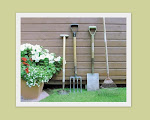 On a bag or label of fertilizer it has 3 numbers for example 32-10-10 these numbers tell you the rate of availability and solubility of nutrients it contains. The first number which in this case is 32% always stands for Nitrogen. The second number 10% is Phosphorus. The last number is 10% and is potassium. An easy way to remember what these numbers mean and how they effect the plant is, UP nitrogen to the leaves or blades of grass, DOWN Phosphorus helps the roots, ALL AROUND potassium helps the overall plant.
On a bag or label of fertilizer it has 3 numbers for example 32-10-10 these numbers tell you the rate of availability and solubility of nutrients it contains. The first number which in this case is 32% always stands for Nitrogen. The second number 10% is Phosphorus. The last number is 10% and is potassium. An easy way to remember what these numbers mean and how they effect the plant is, UP nitrogen to the leaves or blades of grass, DOWN Phosphorus helps the roots, ALL AROUND potassium helps the overall plant.Nitrogen is the most important element to help develop a dense attractive turf. If you are not fertilizing you may notice slow growth, narrow leaves, and a light yellow green color.
Phosphorus and Potassium vary in the amounts that are available. A soil test can help determine the amounts. According to the USU extension there test have shown that 90% of lawns in the Salt Lake Area are high or very high in on phosphorus and potassium. Lawns that are deficient in these elements are not as obvious as that of nitrogen, but may cause stunted growth and winter damage.
Fertilizer Application
Always follow the instructions on the lawn fertilizer bag. When spreading the fertilizer you want to travel in two different directions at right angles to each other this allows the fertilizer to be applied more uniformly and with less streaking. There are different types of spreaders the common ones are cyclone and rotary type. You have to make sure that you calibrate them correctly. Again check your bag of fertilizer and it will tell you how many lbs. per square foot. General rule of thumb is 1 pound fer 1000 square foot.
General review and guidelines
Fertilizer bag contains 3 numbers for example 32-10-10 Nitrogen Phosphorus and Potassium.
- 1st number is amount of Nitrogen UP .
- 2nd number is amount of phosphorus DOWN .
- 3rd number is amount of potassium ALL AROUND
Fertilize on a regular basis every 4-6 weeks to maintain an attractive lawn. Begin when the lawn starts to green up in the spring, mid-to late April. Summer applications of nitrogen fertilizers will not burn lawns if you apply them to a dry lawn and then water them immediately. Fall applications are important for an extended fall color and fast spring green-up. Following a schedule will help you maintain a healthy lawn. USU extension has a easy to follow schedule for fertilizing that you can follow. Always remember for a barefoot desirable lawn you need to make sure you are not only fertilizing but also mowing at correct heights and watering correctly.










